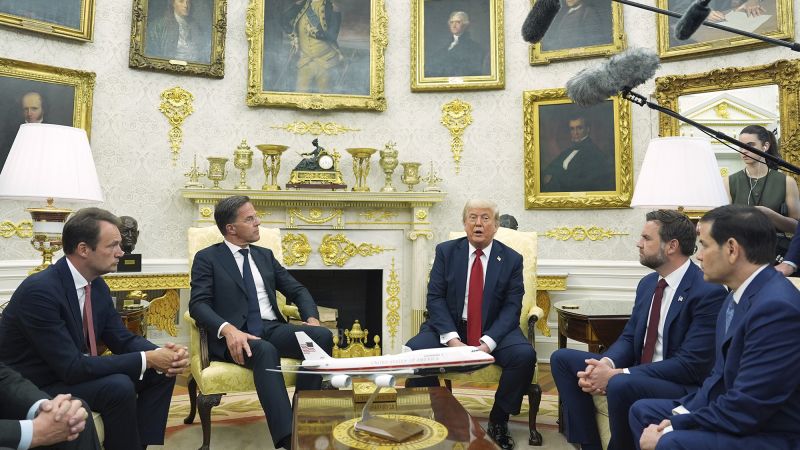President Donald Trump has taken a decisive step in support of Ukraine, announcing on March 4, 2024, that the United States will supply weapons to Ukraine through NATO. This announcement came during a meeting in the Oval Office with NATO Secretary General Mark Rutte. Trump also set a new 50-day deadline for Russia to reach a peace agreement, threatening trade repercussions, including secondary sanctions, if progress is not made.
This marked a notable shift in Trump’s approach to the ongoing conflict, as he had previously maintained a more lenient stance towards Vladimir Putin and Russia. The announcement was met with enthusiasm from some Republican leaders, including Senator Lindsey Graham of South Carolina, who called it a “turning point” in the fight against Russian aggression.
Trump’s recent change in tone follows a period of increasing skepticism about Putin’s intentions. He has criticized Russia’s recent military actions and called out the Russian leader’s unreliability as a negotiator. Despite this new stance, the political timing is complex, as Trump faces backlash from his core supporters over various issues, including the handling of sensitive documents related to the Jeffrey Epstein case.
Polling data reveals a significant divide among Trump’s base regarding support for Ukraine. A March 2024 poll from the Pew Research Center indicated that only 25% of Republican-leaning Americans were “extremely” or “very” concerned about a potential Russian victory. Additionally, 58% of Republicans expressed the belief that Ukraine’s issues are not the United States’ concern.
As Trump attempts to rally support for Ukraine, the reactions from his base remain uncertain. While some members may align with his decision, many have developed a deep-seated skepticism towards Ukraine. A recent Gallup poll found that 56% of Republicans feel the U.S. government is doing “too much” to assist Ukraine, with only about 10% supporting an increase in aid.
Trump’s rhetoric may resonate with some Republicans who are concerned about Russia’s reliability as a negotiating partner. In his statements, he has characterized Putin’s assurances as “meaningless,” suggesting that the Russian leader has squandered opportunities for peace. This perspective could appeal to those within the party who harbor doubts about Russia’s intentions.
Despite the potential for a shift in opinion, significant obstacles remain for Trump. Some factions of his base have cultivated skepticism toward Ukraine and its president, Volodymyr Zelensky. Past interactions, such as Zelensky’s visit to the White House, have led to moments of tension and backlash among Trump’s supporters.
If Trump firmly commits to supporting Ukraine, he may succeed in persuading a substantial portion of his base to follow suit. However, this will require a delicate balance, as many of his most ardent supporters may question whether this aligns with their values and priorities.
As the situation develops, the political landscape surrounding U.S. support for Ukraine will remain closely watched. The effectiveness of Trump’s strategy in garnering support from his base may significantly influence the future of U.S. involvement in the conflict. The coming weeks will be crucial in determining whether his recent stance can unite or further divide the Republican Party.
